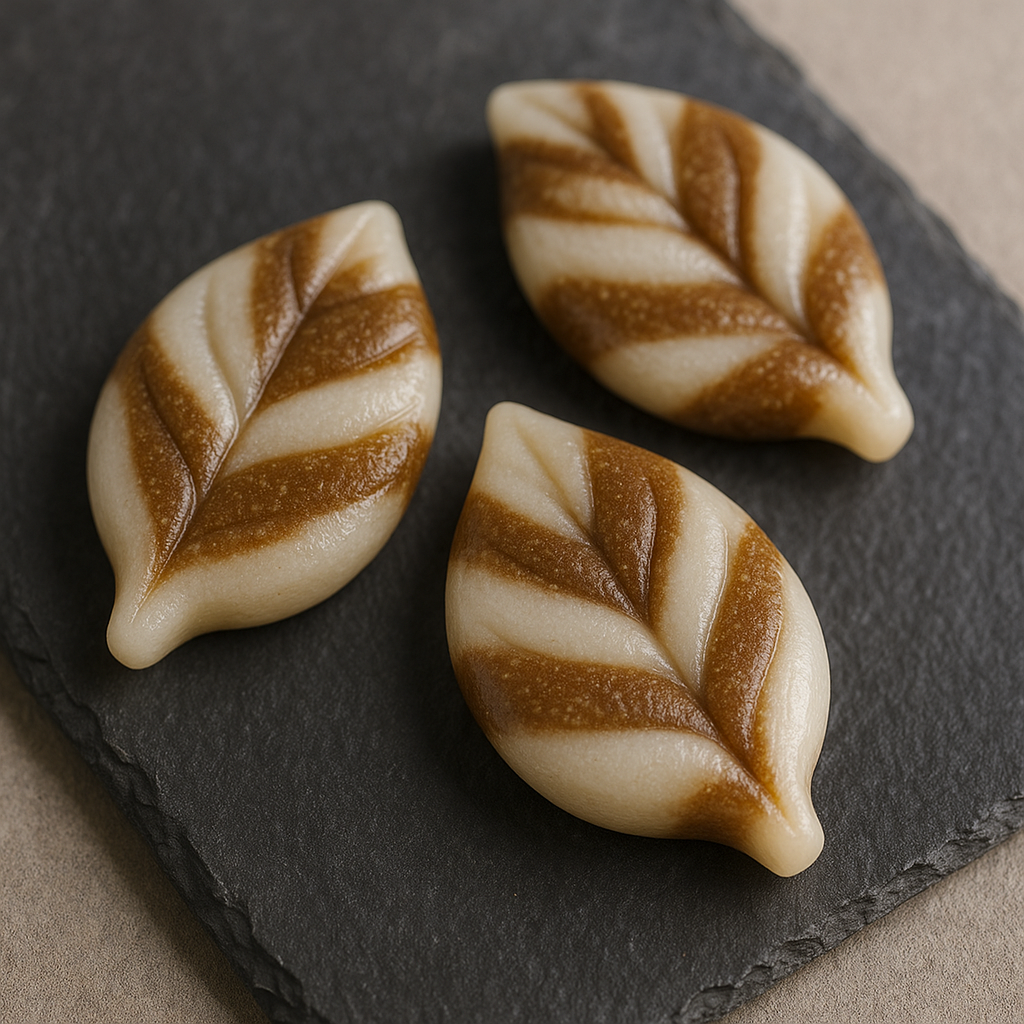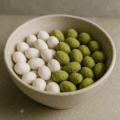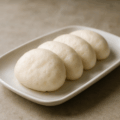べこ餅の特徴
北海道の伝統菓子
べこ餅は、北海道を代表する和菓子で、白と黒(または茶色)の模様が特徴的な餅菓子です。黒糖や砂糖を使い、牛(べこ)の模様に似せて作られることから「べこ餅」と呼ばれます。
素朴で優しい甘さ
黒糖のコクと白砂糖の甘みが組み合わさり、もちもちとした食感と優しい甘さを楽しめます。昔から子供の日や祝い事に供されるお菓子です。
見た目の美しさ
模様の美しさから、祝い事や贈答品にも利用され、北海道の家庭で親しまれてきました。
べこ餅のレシピ
材料(約10個分)
- 上新粉 … 200g
- 白玉粉 … 50g
- 砂糖 … 50g
- 黒砂糖 … 50g
- 水 … 適量
作り方
- 上新粉と白玉粉を合わせ、砂糖と水を加えて耳たぶ程度の固さにこねる。
- 生地を2つに分け、一方に黒砂糖を加えてよく混ぜ、白生地と黒生地を作る。
- 白と黒の生地を交互に重ねたり混ぜたりして、模様を作る。
- 適度な大きさに成形し、蒸し器で15〜20分蒸す。
- 粗熱を取って完成。
シェフのワンポイントアドバイス
模様は自由にデザインできるため、子供と一緒に作るのも楽しいです。蒸しあがったら乾燥しないようにラップをかけて保存してください。
べこ餅の栄養価(1個あたりの目安)
- エネルギー:約100〜120 kcal
- たんぱく質:1〜2 g
- 脂質:0〜1 g
- 炭水化物:20〜25 g
- カルシウム(黒砂糖由来)
- ミネラル類(黒砂糖由来)
低脂肪でエネルギー源になる炭水化物が中心。黒砂糖のミネラル分も摂取でき、素朴で栄養価のあるお菓子です。
べこ餅の歴史
名前の由来
「べこ」とは東北や北海道の方言で「牛」を意味し、牛の模様に似ていることから「べこ餅」と呼ばれるようになりました。
家庭で作られた祝い菓子
昔から子供の日や祝いの席に作られ、家庭で親しまれてきた手作り菓子です。
現在のべこ餅
北海道を代表する郷土菓子として、土産物店や和菓子店でも販売され、観光客にも人気のあるお菓子となっています。
English Version
Features of Beko Mochi
A Traditional Sweet of Hokkaido
Beko Mochi is a traditional confectionery from Hokkaido, characterized by its distinctive black and white (or brown) patterns. It is made using white sugar and brown sugar, resembling the spots of a cow, which is why it is called “Beko Mochi” (“beko” means cow in local dialect).
Simple and Gentle Sweetness
The rich flavor of brown sugar combined with the sweetness of white sugar creates a soft, chewy texture and mild taste. It has long been served for celebrations such as Children’s Day.
Beautiful Appearance
The decorative patterns make Beko Mochi not only delicious but also visually appealing, often used for festive occasions and as gifts. It has been a familiar treat in Hokkaido households.
Recipe
Ingredients (makes about 10 pieces)
- Jōshin flour (rice flour) … 200 g
- Shiratamako (glutinous rice flour) … 50 g
- Sugar … 50 g
- Brown sugar … 50 g
- Water … as needed
Instructions
- Mix jōshin flour and shiratamako, then add sugar and water, kneading into a dough with a soft, pliable texture.
- Divide into two portions; mix brown sugar into one portion to create white and brown doughs.
- Layer or blend the two doughs to create cow-like patterns.
- Shape into flat cakes and steam for 15–20 minutes.
- Cool slightly before serving.
Chef’s Tip
The patterns can be arranged freely, making it fun to prepare with children. After steaming, wrap the mochi to prevent drying out and to maintain softness.
Nutritional Value (per piece, approx.)
- Calories: 100–120 kcal
- Protein: 1–2 g
- Fat: 0–1 g
- Carbohydrates: 20–25 g
- Calcium (from brown sugar)
- Minerals (from brown sugar)
Low in fat and rich in carbohydrates as an energy source, Beko Mochi also provides minerals from brown sugar, making it a wholesome and nostalgic snack.
Historical Background
Origin of the Name
In the Hokkaido and Tohoku dialects, “beko” means cow. The sweet was named “Beko Mochi” because its patterned appearance resembles a cow’s hide.
A Festive Homemade Sweet
Traditionally made at home for Children’s Day and special celebrations, Beko Mochi has long been a symbol of festivity and family gatherings.
Modern-Day Beko Mochi
Today, Beko Mochi is widely sold in souvenir shops and Japanese confectionery stores, representing one of Hokkaido’s signature traditional sweets and enjoyed by tourists as well as locals.



何でも質問してください!